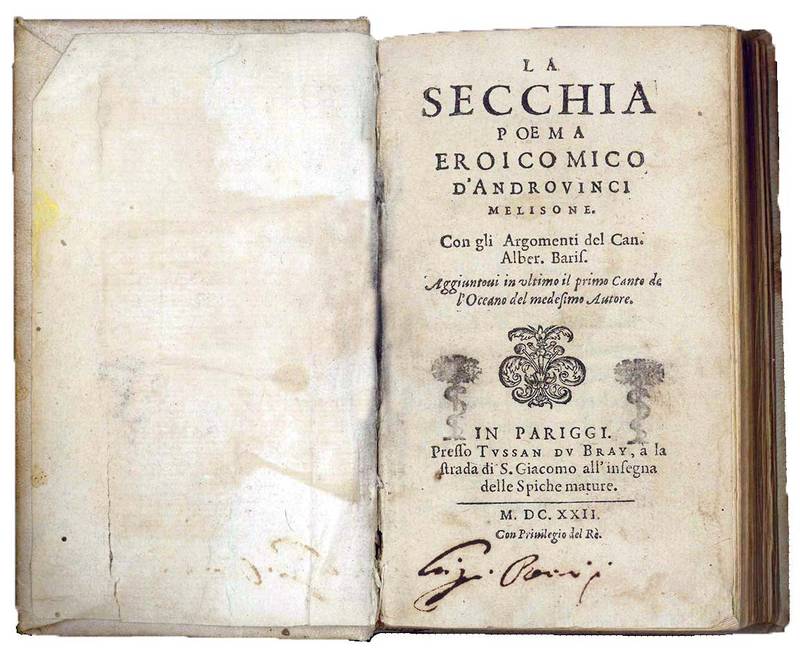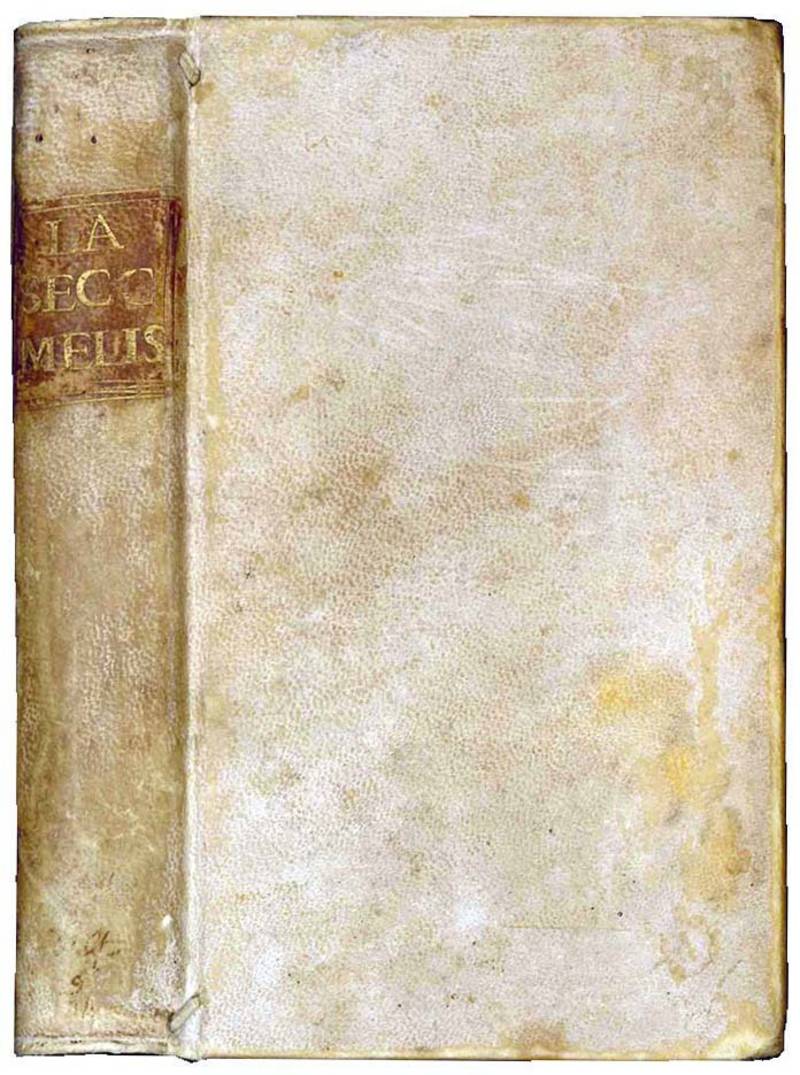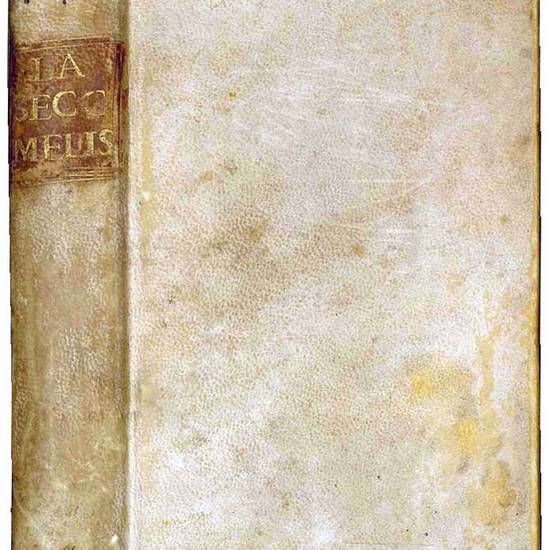12mo (140x83 mm). [6], 166, [2] leaves. Collation: a6 A-O12. The leaf O12 is a blank. Contemporary vellum, spine with gilt title on label (stain on the back panel). Ownership entries of a certain Luigi Bernini. Wormhole in the last 3 leaves with loss of text, two small emblems stamped on the title page, a bit browned, but genuine.
FIRST EDITION, second issue, of the first draft of the Secchia rapita, the most successful mock-heroic poem of Italian literature. Composed between 1614 and 1618, the work first circulated in manuscript form, immediately attracting the attention of the Inquisition. After several (sometimes illegal) attempts to have it printed in Modena and Padua, Tassoni was forced to go to France to avoid ecclesiastical censure. It was through the efforts of Jean Chapelain, a friend and collaborator of G.B. Marino, that Tassoni's poem was eventually printed in Paris in late 1621. Of this first Paris edition three issues are known. Almost at the same time, a counterfeit, probably printed in Venice, appeared on the market. The counterfeit is based on the third issue of the Paris edition but is very roughly printed.
For the second edition, issued in Rome (with Ronciglione falsely stated on the title-page) in 1624, Tassoni was obliged to correct the text, meeting the demands of Pope Urban VIII, who, after the revisions, had to admit he liked the poem. The revised text (with the title changed to La Secchia rapita – ‘The Stolen Bucket') became the standard text, reprinted dozens of times in and outside Italy until the end of the 18th century.
An epic poem written in octaves and spanning twelve books, La Secchia Rapita tells of the war that broke out between Bologna and Modena, as a result of the theft by the Modenese, called ‘Gemignani' after the name of their patron saint, of a moth-eaten bucket belonging to the ‘Petroniani', i.e. the Bolognesi. Homer's entire Olympus takes part in the war, siding with one town or the other. Ridiculous figures like the bully Count of Culagna and boastful womanizer Cavalier Titta complete the satirical poem, which mocks the secular and often futile rivalries between Italian cities.
Alessandro Tassoni was born in Modena in 1565 into a noble family, but was orphaned at an early age. He studied in Bologna, Ferrara and Pisa, then in 1599 he entered the service of Cardinal Ascanio Colonna. Between 1600 and 1603, Tassoni followed him to Spain. Back in Italy, he lived mainly in Rome as an ambassador of Charles Emmanuel I of Savoy. In 1618 he was called to Turin to carry out the duties of secretary. In 1621 he retired from the post and from court life altogether, but in 1626 he entered the service of Cardinal Ludovisi. From 1632 to his death, Tassoni lived at the court of Francis I, Duke of Modena (cfr. P. Puliatti, Bibliografia di Alessandro Tassoni, Florence, 1959, pp. 162-191).
Puliatti, op. cit., no. 98; Gamba, no. 297.
[4679]





